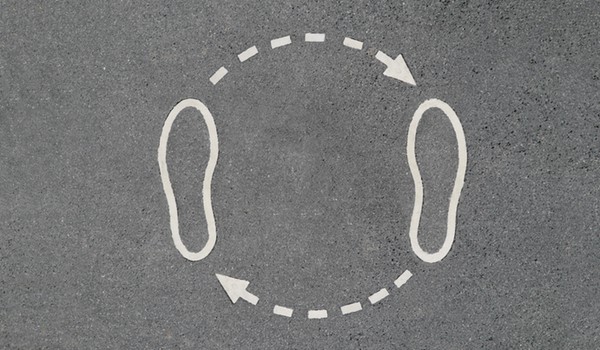
I’ve found that over the years my workflow and productivity tactics haven’t just evolved. I’d suggest they’ve also gone through a “versioning” of sorts, which is very different than evolution. Let me explain.
The word version is derived from the Latin word vertere, which means “to turn.” The word evolve comes from the Latin word evolvere, which means “to unroll.” My workflow has certainly evolved over the years, but every time I’ve somewhat “unrolled” a new workflow element, whether it is through something like The Strikethrough System or moving to Todoist as my task management solution, I’ve also created a new version of my workflow. The evolution is part of the process, but the versioning is the finality of that process.
Let’s examine what Apple released this week in these terms. The new iPhone is not so much an evolution of the device as it has evolved leading up to the release of the new iPhone 6 (and iPhone 6 Plus). But with the release of these new devices, new versions have come into play. Evolution of the device has made it better over time, as the definition of the term suggests, but the new version creates a new pillar – a new starting point – and one can clearly look back and see each version as a pillar during the evolution of the device. The same goes for iOS. The new version of Apple’s mobile operating system has taken into account all of the things that iOS 7 offered, added some elements that users clamoured for, and borrowed elements from third party developers to create a better version than its predecessors.
The same goes for the Kindle. Amazon announced a new version of the e-reader called KindleVoyage that improves upon the Paperwhite. In fact, this version will be the first Kindle I buy because of that. This version is the one I’ve been waiting for. It’s the one that will replace my Kobo Mini and firmly push me into the Amazon Kindle side of the e-reading pool. The evolution of the Kindle led to the version known as (fittingly named) Kindle Voyage.
The same goes for digital products. Asian Efficiency looked at its OmniFocus Premium Posts product and decided to evolve it, eventually creating a new version of it. By changing it from PDFs and videos to an online course, they’ve taken it to new heights and improved the overall experience. This versioning creates a very clear distinction between its predecessor and successor.
And the same goes for the way we operate.
My workflow has evolved over the years, creating a new version of the way I work. Through the approach I take, the apps I use, and my relationship with all of those things, I have created a new pillar that I can say is a versioning of my workflow. I can look back at my days of OmniFocus use and see a different version, but know that I’ve taken elements of that version and applied it to the one I’m using today. I can look back at all of the writing tools I use before and understand why working with Scrivener now is better for the way I operate (with credit going to Joseph Michael’s Learn Scrivener Fast course for helping me realize that). The way I used Evernote before isn’t even close to how I use it now, and I know that the way I use Evernote down the line will differ from how I use it now. I know that the way I use other apps will also change over time, fostering a better workflow and, as a result, a better version of my work.
When you start to look at the way you work and the systems you have in place to help you with that work, that’s the beginning of a new version of your workflow. It begins to evolve. You add tried and tested frameworks and apps, which become part of your workflow. Then the work becomes easier to do and involves less friction. You’ve evolved into Version 1.0.
Then you tweak that version to better suit your needs, perhaps through changing how you use an app or changing apps altogether. Doing so evolves that version until it improves upon your workflow enough to make the work even easier to do and removes even more friction from your workflow. Now you’re at Version 2.0.
And the evolution continues, along with the versioning.
Keep in mind that you can spend too much time versioning, which isn’t the idea here. Versioning needs to be deliberate. It needs to signify landmark occasions. After all, when you turn too much you usually wind up going in circles.
The idea is to let evolution carry you down the path, and let versioning help you craft the ideal path for you.
